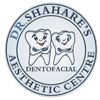Our body is unique, invaluable & priceless gift of Mother Nature to us. So is every part is important in our body & tooth is also not an exception to it. A tooth should not be extracted unless it is indicated or can’t be salvaged. Though medical science is at par now days, we can replace tooth with naturally looking artificial one but still that artificial word looks much inferior to original one.
Extracting of one tooth reduces chewing efficiency by almost 15 to 20 %. That means 15 to 20% loss in digesting abilities and stomach upsets. People usually don’t even realize it’s because of extracted tooth & then they run to some other stomach doctors for medications. Extracting teeth has some adverse effects on your facial & oral structures & looks too. And no one wants to look old anymore. Extracting tooth is more aggressive treatment as compared to RCT
Quite a times patients highly neglect there condition that tooth is badly decayed & un-restorable only then it should be extracted. Hence root canal treatment is tooth saving procedure.
RCT is a specialized, Precise, minimally invasive surgical procedure to save decayed and painful ailing tooth. In this procedure tooth is saved from extracting which is unreplenishable & permanent loss to human body. This procedure involves giving local anesthesia in relevant affected area only, to reduce pain during procedure. Most of the time patients are worried about pain but believe us this procedure is most of the time painless unless there is major infection and more neglected chronic condition from patient’s side. So it’s advisable for patients to do periodic check up and implement “sooner the better” philosophy. Always remember sooner you go to dentist the better your experience will be with your dentist and much lesser will be the pain.
RCT is the process of cleaning your infected & badly decayed tooth from inside out. This prevents that tooth from getting extracted. Believe us saving the tooth is what advisable to the patients.
Doing RCT prevents infection from getting spread to adjacent areas such as gum, bone, soft tissue spaces & other vital parts of the body. Which is more severe condition & in some cases life threatening conditions.
Local anesthesia is given into the affected tooth and adjacent area. After that tooth is drilled with the help of specialized instruments to selectively gain access to the inner core i.e. infected vital area of the tooth. That area is cleaned with infection with the help of different medicaments, tooth root canal is shaped with different rotary files, X ray is taken for confirming the proper procedure protocol, apex location is done with apex locators to assure proper cleaning of canals to the proper depth, after controlling infection, tooth root is then filled with some inert material (Gutta Percha) and then it is restored with proper restorative materials to finally seal the tooth on top.
After RCT & reliving of pain it is advisable to restore that tooth with cap or crown to assure longetivity of your treatment & enjoy your chewing anything, everything. Failing which there are chances of re-infection & fracture of that tooth which can lead again painful scenario and leading to extraction of tooth.
NON SURGICAL ROOT CANAL TREATMENT
This is a very specialized non surgical treatment of treating a surgically indicated treatment related to severe tooth infection spreading into adjacent bone tissues. When tooth infection is highly neglected and suppressed with the help of medications or home remedies instead of getting it treated by dentist, tooth becomes highly infected and infection crosses from tooth to adjoining bone and surrounding tissues. Abscess forms into the bone spaces and severe bone wear occurs adjoining affected tooth. Due to this wear tooth support gets lost and tooth becomes mobile. Many a times associated cyst, tumors can develop into the site if left untreated. In extreme conditions cancer can also develop. This can result in highly complicated condition, demanding either surgical intervention or tooth extraction.
In this technique we try to control infection non-surgically by just RCT procedures, (It cannot be used once tumor or cancer develops, for which still surgical interventions are best). After controlling infection bone wearing process stops and some medicaments are applied into the tooth to help new bone formation.
Pros- This is minimally invasive treatment and may reduce the need of surgical intervention or tooth extraction. Early intervention is the key to this kind of treatments.
Cons- This treatment is time consuming and often requires multiple visits. Time duration ranges from six weeks to a year depending on the severity and response to the treatment. However few cases do not respond to this type of treatment and last resort remains surgical intervention.
